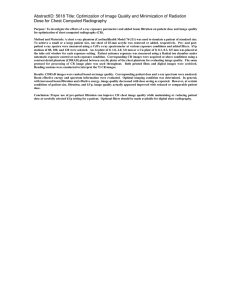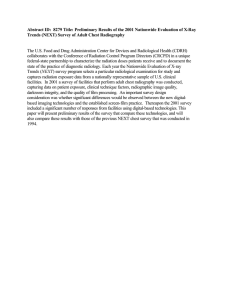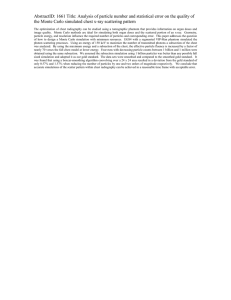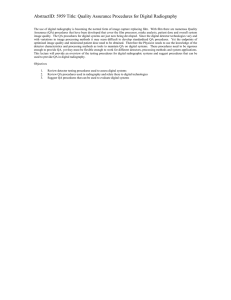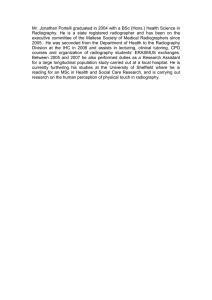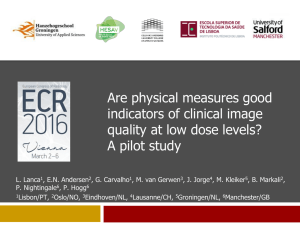AbstractID: 8287 Title: Evaluating Parameters for Mobile Chest Computed Radiography:... Quality and Effective Dose for Three Systems
advertisement
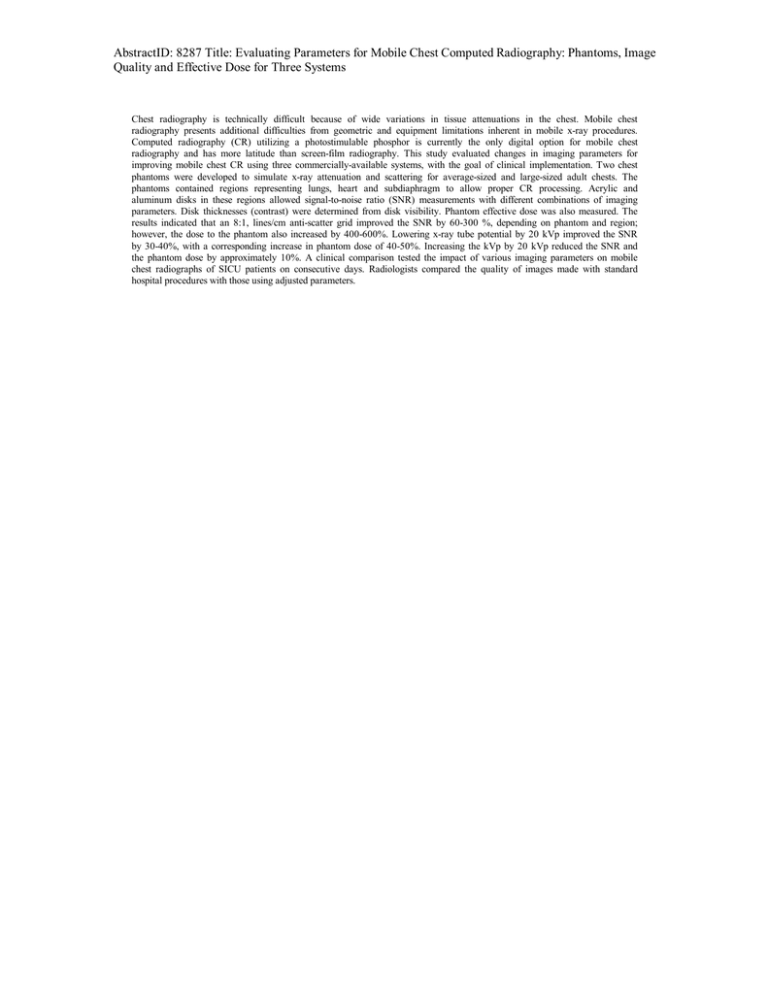
AbstractID: 8287 Title: Evaluating Parameters for Mobile Chest Computed Radiography: Phantoms, Image Quality and Effective Dose for Three Systems Chest radiography is technically difficult because of wide variations in tissue attenuations in the chest. Mobile chest radiography presents additional difficulties from geometric and equipment limitations inherent in mobile x-ray procedures. Computed radiography (CR) utilizing a photostimulable phosphor is currently the only digital option for mobile chest radiography and has more latitude than screen-film radiography. This study evaluated changes in imaging parameters for improving mobile chest CR using three commercially-available systems, with the goal of clinical implementation. Two chest phantoms were developed to simulate x-ray attenuation and scattering for average-sized and large-sized adult chests. The phantoms contained regions representing lungs, heart and subdiaphragm to allow proper CR processing. Acrylic and aluminum disks in these regions allowed signal-to-noise ratio (SNR) measurements with different combinations of imaging parameters. Disk thicknesses (contrast) were determined from disk visibility. Phantom effective dose was also measured. The results indicated that an 8:1, lines/cm anti-scatter grid improved the SNR by 60-300 %, depending on phantom and region; however, the dose to the phantom also increased by 400-600%. Lowering x-ray tube potential by 20 kVp improved the SNR by 30-40%, with a corresponding increase in phantom dose of 40-50%. Increasing the kVp by 20 kVp reduced the SNR and the phantom dose by approximately 10%. A clinical comparison tested the impact of various imaging parameters on mobile chest radiographs of SICU patients on consecutive days. Radiologists compared the quality of images made with standard hospital procedures with those using adjusted parameters.
